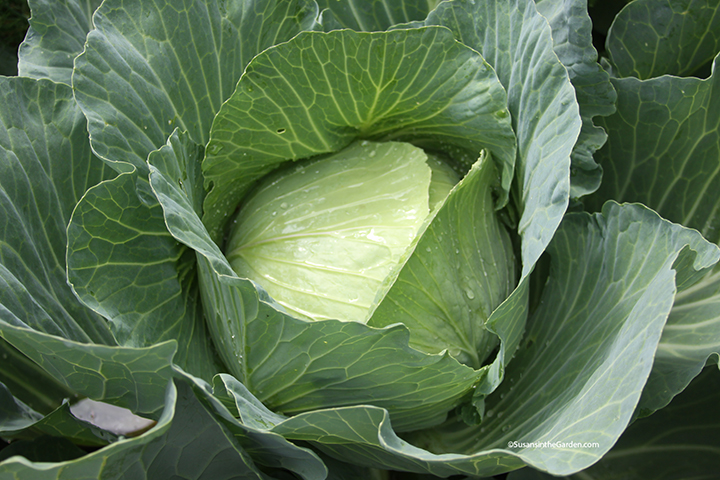How to Grow Cabbage

It’s a lot of fun to grow cabbage but you need to be aware that they can have insect problems. Fortunately, the plants don’t need to be pollinated so using row cover is the easiest solution.
Latin Name: Brassica oleracea var. capitata
Plant Family: Brassica (Brassicaceae)
Cool-season crop
Did You Know?
Cabbage is one of the oldest cultivated crops, dating back at least 2,500 years. Pickling has been a common method of preserving cabbage even in those early times. This crop originated in the Mediterranean and Asian regions of the world. Then it made its way to northern Europe about 2,000 years ago. It is now commonly used throughout the world and in all types of cuisine.
Plant Seeds or Seedlings? Start seeds indoors or purchase seedlings at a nursery.
When: Sow seeds indoors 10 weeks before your last anticipated frost. Transplant outdoors once the danger of hard frosts has passed.
Days to Germination: 7 to 10 days
Depth to Sow: 1/4 inch
Spacing: 10 to 18 inches apart, depending on the cultivar; refer to seed packet.
Days to Maturity: 65 to 80
Cultural Information:
I think you’ll find it’s not hard to grow cabbage once you address their following needs. Prepare the planting bed. Since there are many different sizes of cabbage, plant seedlings at the spacing recommended on your seed packet. Feed plants with an organic nitrogen fertilizer such as fish emulsion diluted at half-strength. If aphids or cabbage worms are a problem in your area, immediately cover the bed. Use either floating row cover or agricultural insect netting to create a physical barrier over the plants. This works great! Water the plants regularly. Be aware that cabbage heads can split wide open during a heavy rainstorm that follows a period of drought. To prevent this, water your crop regularly and harvest heads as soon as they reach maturity.
Susan’s Picks: ‘Caraflex’ (green pointed), ‘Famosa’ (Savoy), ‘Early Jersey Wakefield’ and ‘Golden Acre’ (traditional round heads), ‘Kalibos’ (purple pointed)
Potential Insect Problems:
Aphids, cabbage worms, slugs, pillbugs
When to Harvest:
Pick cabbage when the heads feel solid. If you cut the cabbage head from the main stem, smaller heads might form later so leave the stub in the ground.
How to Cook & Preserve:
Cabbage can be steamed or braised as a side dish or added to soups and stews. Unwashed heads of cabbage can be stored in the refrigerator for up to two weeks. One of the most popular ways to preserve cabbage is by making sauerkraut and then canning it (with the brine) in jars using the water-bath canning method.
My Videos About Growing Cabbage:
- Organic Insect Control: Aphids, Cabbage Worms & Leafminers
- Grow Cabbage Family Crops Organically
- Organic Insect Control: Flea Beetles, Hornworms, Slugs & Snails
Back to Vegetable Grow Guide Chart
Copyright: Susan Mulvihill, Susan’s in the Garden, SusansintheGarden./com


